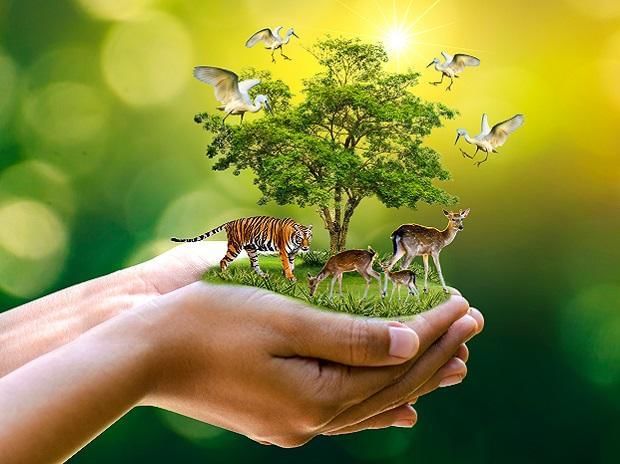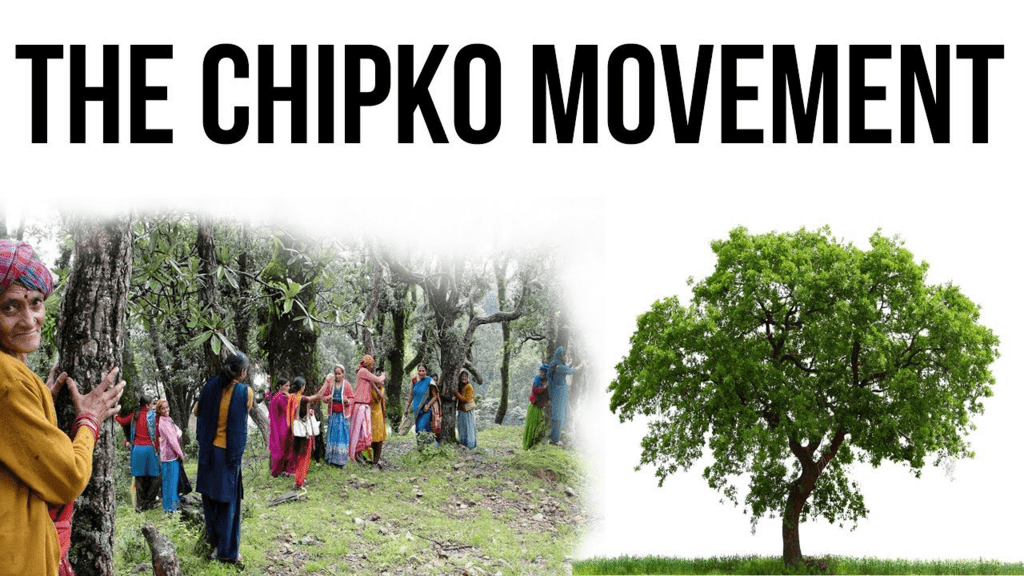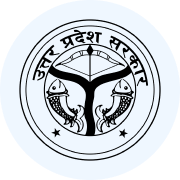Class 10 Science Chapter 16 Previous Year Questions - Sustainable Management of Natural Resources
Short Answer Type Questions
Q1. Name two industries based on forest produce. [Allahabad 2019]
Timber industry, paper manufacturing industry, lac industry and sports equipment industry are industries based on forest produce.
Q2. What is a dam? Why do we seek to build large dams? While building large dams, which three main problems should particularly be addressed to maintain peace among local people? Mention them. [CBSE 2018]
A dam is a manmade large structure barrier that stops or restricts the flow of water or diverts the flow of water as per our need.
We seek to build large dam because the water reservoirs created by dams not only suppress floods but also provide water for activities such as irrigation, human consumption, industrial use, aquaculture, harnessing hydroelectric power and navigability. The three major problems in building large dams are:
- Large areas of agricultural land and human habitation are to be sacrificed as they get submerged. It creates the problem of satisfactory rehabilitation of displaced people
- Large eco-systems i.e. areas of ecological, culture and social importance for the local population are destroyed.
- The vegetation which is submerged rots under anaerobic conditions and gives rise to large amounts of methane gas which leads to a greenhouse effect.
So while constructing the large dam, the local interest and welfare along with the above problem should be taken into consideration to maintain the peace among local people.
Q3. While teaching the chapter “Our Environment” the teacher stressed upon the harmful effects of burning fossil fuels, plastic, paper etc. The students noticed the extensive use of plastic and polythene in daily life, which can be avoided and the surroundings can be kept clean. They decided to make their school “plastic and polythene” free and motivated each other for its minimum use.
(а) Why should the use of polythene and plastic be reduced in daily life?
(b) In what ways the students would have avoided the use of plastic and polythene in their school?
(c) How the students would have motivated each other for the success of their decision? [CBSE 2017-18 C]
(a) Polythene and plastics are synthetic materials and are non-biodegradable. Hence, they would cause pollution and damage the environment.
(b) In schools, there is extensive use of pens, colour pens etc. Students can be told to either use ink pens or use refills for ball-pens — Reuse.
Students can carry their food in steel boxes instead of plastic boxes. Even water can be carried in steel flasks.
Reports/Projects etc. can be given in newspaper or cardboard folders rather than plastic folders — Repurpose and Refuse.
(c) The students can be motivated in many ways: By conducting morning assemblies, street plays, speeches, discussions, display boards etc. There can be a stock of paper bags/paper folders for students to carry their stuff in and they can be asked to replace their plastic bags with those.
Q4. What is sustainable development? Suggest any one method to achieve it. [CBSE 2006,2015,2016-17 C, 2017-18 C]
Development which can be maintained for a long time without damage to the environment is called sustainable development.
- Plant more trees.
- Recycle resources to the maximum.
Q5. What is “Sustainable Management of Natural Resources”? Why is it necessary? Which one out of reuse and recycle, would you practice in your daily life and why? [CBSE 2017-18 C]
“Sustainable Management of Natural Resources” means managing natural resources like air, water, soil, forests etc., to meet current human needs while preserving them for the needs of future generations and maintaining the quality of our environment.
Sustainable management is essential to maintain the quality of the environment and also to ensure their availability continuously, even for the future generation.
Out of reuse and recycle, reuse is a better practice, as it can be done again and again without involving any input whereas recycle requires some energy, and thus preferable.
Q6. (a) Water is an elixir of life, a very important natural resource. Your Science teacher wants you to prepare a plan for a formative assessment activity, “How to save water, the vital natural resource.” Write any two ways that you will suggest to bring awareness in your neighbourhood, on ‘how to save water.’
(b) Name and explain any one way by which the underground water table does not go down further. [AI 2017]
(a) Two ways of creating awareness among neighbourhood are:
- Not using the shower, but to use a bucket to collect water and bathe with that water.
- Not to leave the tap open while brushing the teeth.
- Have a sprinkler to water the plants in the garden and not to flood the plots.
(b) Two causes of our failure to sustain the availability of underground water are:
- Rising population: As the population increases demand for water increases resulting in depletion of underground water level.
- Industrialisation: Industries need more and more water to manufacture products. With growing industrialisation demand for water increases which results in a reduction in the availability of underground water.
Q7. (a) Explain two main advantages associated with water harvesting at the community level. [AI 2017]
(b) List the contribution of Dr Rajendra Singh in the conservation of water.
(a) Two main advantages associated with water harvesting are:
- Water stored during the rainy season increases the life of downstream dams and reservoirs and can be used by the community when required.
- It recharges the groundwater and increases its level.
- Water harvesting decreases the effect of droughts and floods. (any two)
(b) In two decades, Dr Rajendra Singh built 8600 johads and other structures to collect water in Rajasthan. The collected water was brought to 1000 villages of the state and transformed the lives of thousands of villagers.
Q8. Why is the conservation of wildlife considered important for us? Give any two reasons. [CBSE 2017]
Conservation of wildlife is important in maintaining ecological balance:
- Wildlife keeps control over a number of herbivorous animals.
- It is a storehouse of a number of articles like wood, herbs, lac and honey.
Q9. List any four suggestions you would recommend to your friends to make them more environment-friendly. [CBSE 2008,2016-17 C]
- Reduce the use of energy resources. For example, we can save electricity by switching off unnecessary lights and fans.
- Recycle plastic, paper, glass and metal articles.
- Reuse of things. For example, we can reverse the envelopes and use them again. Similarly, we can use empty bottles of pickles, jams and squashes for storing kitchen items.
- On day to day basis, we can decide which route to take to undertake a project, so that the minimum use of energy and resources is involved.
Q10. Why should we conserve forests? Suggest any two ways to conserve forests. [CBSE 2008,2015,2017]
Forests are biodiversity hot spots. The aim of the conservation of forests is to preserve the biodiversity that we have inherited. Loss of diversity leads to ecological instability. Ways to conserve forests :
- Silviculture - Reforest those forest lands where a large number of trees have been felled in a planned way.
- Help of local people - Local people can help a lot in conserving the forests.
Q11. Management of forest and wildlife resources is a very challenging task. Why? Give any two reasons. [CBSE 2017]
Management of forest and wildlife resources is very challenging because :
- there are many people who have a stake in these resources and may not follow rules.
- these resources cannot be contained in a limited area and hence cannot be guarded easily.
Q12. Explain giving example where active involvement of local people lead to efficient management of the forest. [Delhi 2016]
People’s Participation in Forest Management. Example:
- The Sal forests of the Midnapore district in West Bengal got reduced alarmingly in 1972.
- Surveillance and policing to protect the forest resulted in a frequent clash between forest officials and the villagers.
- The department then changed its strategy and in Arabari forest, villagers were involved in the protection of the badly damaged Sal forest.
- In return, villagers were given employment and were allowed to collect firewood and fodder at a nominal fee.
- By 1983, the Arabari forest showed a remarkable recovery.
Q13. What was “Chipko Andolan”? How did this ‘Andolan’ ultimately benefit the local people and the environment? [AI 2016]
Chipko Andolan
- During 1970, in Reni village of Garhwal, a contractor was allowed to cut trees in a forest near the village.
- When the contractor’s workers went to the forest to cut trees the women of the village hug the tree trunks to prevent the workers from cutting trees.
- Chipko means ‘hug’ and the movement started by the villagers by hugging trees is called the ‘Chipko Andolan’.
The movement benefitted the local population by making available forest products. It benefited the environment by conserving the quality of soil and sources of water thereby maintaining balance in nature.
Q14. List four advantages of properly managed watershed management. [Delhi 2016]
Four advantages of properly managed watershed management are-
- It mitigates drought.
- It mitigates flood.
- It increases the groundwater level.
- It provides drinking and irrigation water.
Q15. Why are forests considered “biodiversity hot spots”? List two ways in which an individual can contribute effectively to the management of forests and wildlife. [HOTS] [DeIhi 2015; Foreign 2012]
Biodiversity is measured by the number of different life forms found in an area. In a forest, various species are available which include bacteria, fungi, ferns, plants, nematodes, insects, birds, reptiles and mammals. Forests are, therefore, called “biodiversity hot spots.”
An individual can contribute to the management of forest and wildlife by:
- avoiding cutting of forest and killing of wildlife.
- educating people about the importance of forest and wildlife in our life.
Q16. (a) List four measures that can be taken to conserve forests. [Delhi 2015]
(b) List two problems that may arise by planting trees of a single variety over vast tracts of a forest. [Foreign 2015]
(a) For measures that can be taken to conserve forest are:
- Avoid cutting trees.
- To plant trees as much as possible.
- To educate the people about the importance of forest in our lives.
- To enforce the law for severe punishment to anyone involved in the illegal falling of trees.
(b) The two problems that may arise are:
- If a disease occurs to that variety, it may affect a vast area.
- Different organisms depend on different trees for food. If only one variety is planted, many organisms may not get their food.
Q17. List two main causes of the pollution of water of the river Ganga. State how pollution and contamination of river water prove harmful for the health of the people of neighbouring areas. [AI 2015]
- Largely untreated sewage such as garbage and excreta are dumped into the Ganga.
- Pollution is also caused by other human activities like bathing, washing and immersion of ashes or unburnt corpses.
- Industries also contribute in Ganga’s pollution by loading chemical effluents and makes the water toxic, killing aquatic organisms.
Harmful effects:
- It has made the water unfit for consumption and if consumed without treatment, it causes diarrhoea, skin disease and many other diseases in human being.
- It causes death to aquatic animals.
Long Answer Type Questions
Q1. We are all familiar with the “Chipko Movement” which originated in the early 1970s in a remote village of Garhwal high up in the Himalayas. This was a result of a dispute between the local villagers and a greedy contractor who had been allowed to fell the trees in a forest close to the village. When the contractor’s workers appeared in the forest to cut the trees, the menfolk were not present, so the womenfolk took the lead in the movement of preventing the contractor from felling the tree. They hugged the trees and forced the contractor to withdraw.
(i) Why were the villagers against the felling of trees?
(ii) How do forests maintain ecological balance in nature?
(iii) List two values exhibited by the “Chipko Movement”. [CBSE 2017-18 C]
(i) The villagers were against the felling of trees as they are actual stakeholders. They depend on forests for their day-to-day living, Example: for fruits, leaves, firewood, medicinal plants, food for their cattle etc.
(ii) Forests are "biodiversity hotspots. They maintain ecological balance by providing 0 2 and CO2 for all living beings, by maintaining water cycle and nutrient cycles, by providing specific ecological niche to various animals etc.
(iii) Values exhibited by Chipko Movement are:
- Concern for maintaining one’s environment.
- Sense of belonging.
- Feeling part of unit/team.
- Being together in all endeavours.
- Appreciating and realising the significance of trees/nature in human life.
Q2. (a) What is sustainable development? Why is it necessary?
(b) What is water harvesting? List its four benefits. [CBSE 2016-17 C]
(a) Sustainable development: Sustainable living has always been an integral part of India’s tradition and culture. ‘Vasudhaiv Kutumbakam’ which means “the entire earth is one family' reflects on philosophy that entire natural world be in harmony. Sustainable development means development in a manner so that our resources are managed in a way such that they are used by present generation, without causing any damage or harm to them and remain available for future generation as well. It encourages forms of growth that meet current basic human needs while preserving the resources for the needs of future generations. It is necessary so that these resources are not damaged or depleted in a way so that future generation will not have the benefit of availability of these resources. These resources are not unlimited and human population and hence demands on these resources is increasing of a very fast rate.
It would also ensure equitable distribution of resources to all and safe disposal of the wastes too.
(b) Water harvesting involves ways to save water to capture every trickle of water by making dams or indigenous methods like digging small pits, lakes, construction of dykes, sand and limestone reservoirs, roof-top water collection units.Water HarvestingIts benefits are :
- It increases biomass production.
- Mitigates droughts and floods.
- Recharges groundwater levels.
- Brings rivers back to life.
- Increases the income of watershed community i.e., people living in nearby areas.
- Conserves ecological balance.
Q3. (a) In the context of conservation of natural resources, explain the terms refuse, reduce, recycle, repurpose and reuse.
(b) Why is conservation of water necessary? State any four reasons. [CBSE 2016-17 C]
(a) We need to conserve natural resources, not only for future generations, but economic development is also linked with it. Hence one should practise 5 R ’s to conserve the environment: Refuse, Reduce, Reuse, Repurpose and Recycle.
- Refuse: It means to say no to things one doesn’t need
- Reduce: It means that one uses less of resources. For e.g., less use of water, electricity, petrol etc.
- Recycle: It means that one recycles paper, plastic, metal, glass etc., to make fresh items instead of synthesising fresh plastic, paper etc. The wastes need to be segregated and some energy used to remould these items.
- Repurpose: When a product cannot be used for its original purpose, then it should be put to use for some other purpose. For example, old crockery can be used for growing plants.
- Reuse: It is better than recycling because the same thing is used again and again. Example: jars of pickle and jams can be used for storing other things.
(b) Water is a basic necessity for all terrestrial life forms. Water is a very important resource and in fact all human civilisations started at the source of water.
Regions of water scarcity are usually associated with acute poverty. Hence, we must conserve water because :
- It is important for all metabolic functions in an organism.
- It is required for both agriculture as well as our daily needs.
- We get rainfall only during a few months of the year, hence sufficient water is not available throughout the year.
- Our activities like pollution from industrial effluents and urban wastes also impact the water bodies adversely.
Hence, we must conserve water.
|
59 videos|118 docs|73 tests
|
FAQs on Class 10 Science Chapter 16 Previous Year Questions - Sustainable Management of Natural Resources
| 1. What is sustainable management of natural resources? |  |
| 2. Why is sustainable management of natural resources important? |  |
| 3. What are the key principles of sustainable management of natural resources? |  |
| 4. What are some examples of sustainable management practices for natural resources? |  |
| 5. What are the challenges in implementing sustainable management of natural resources? |  |























